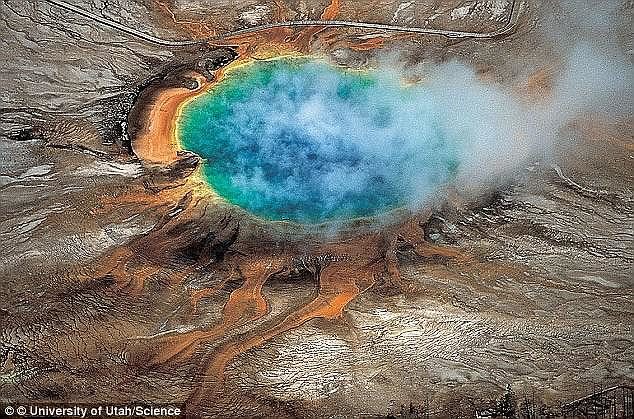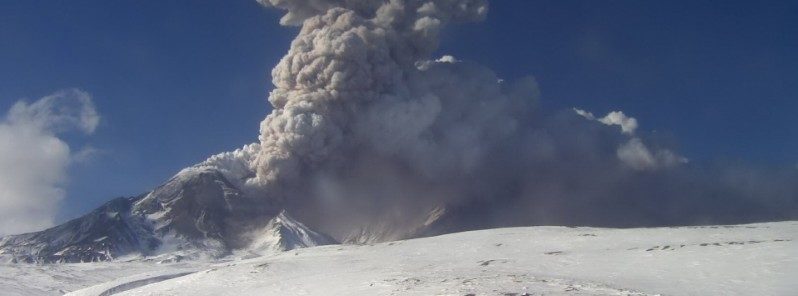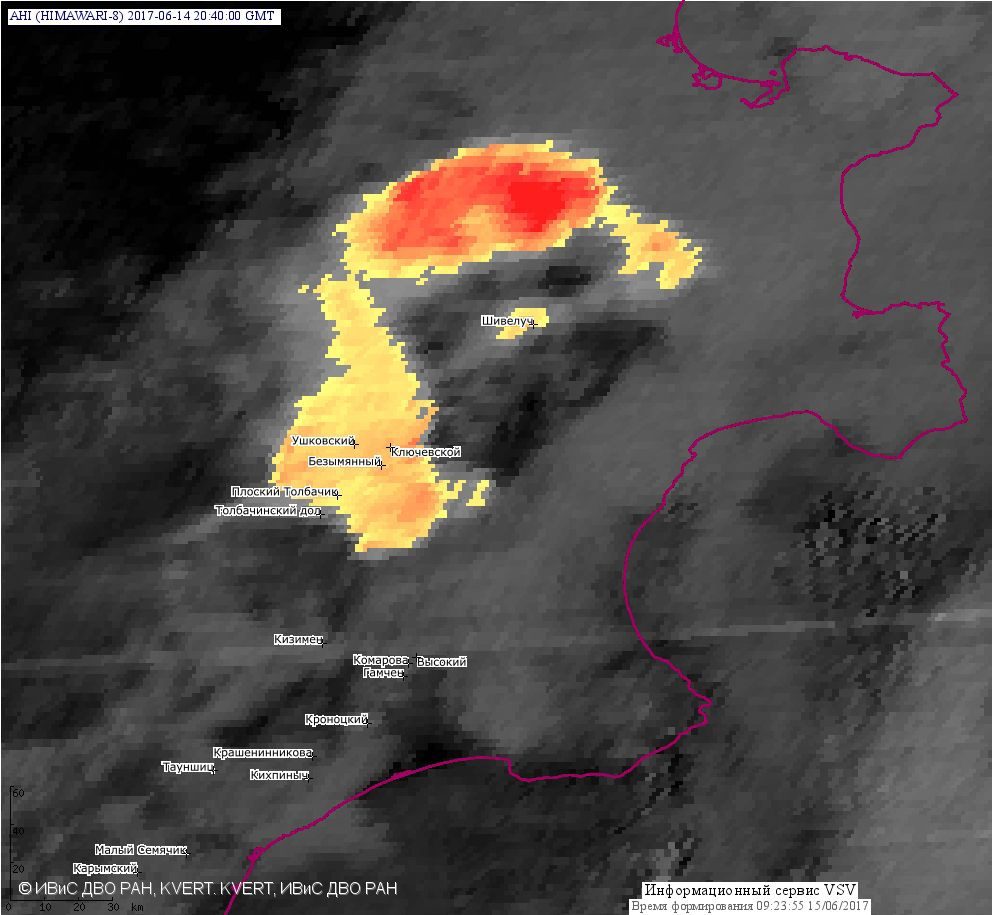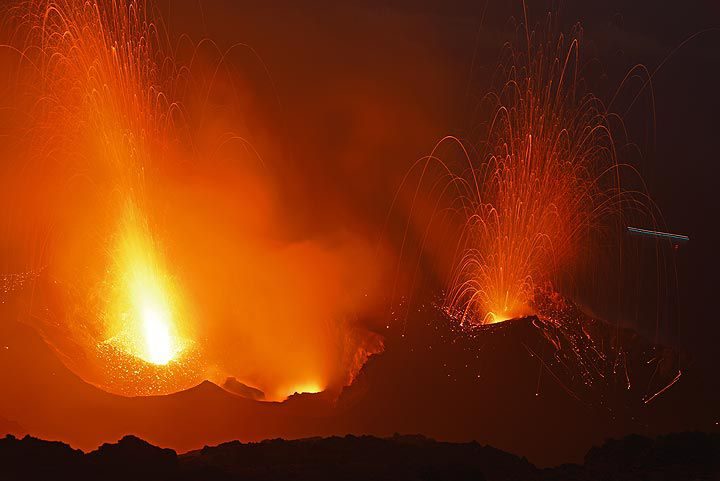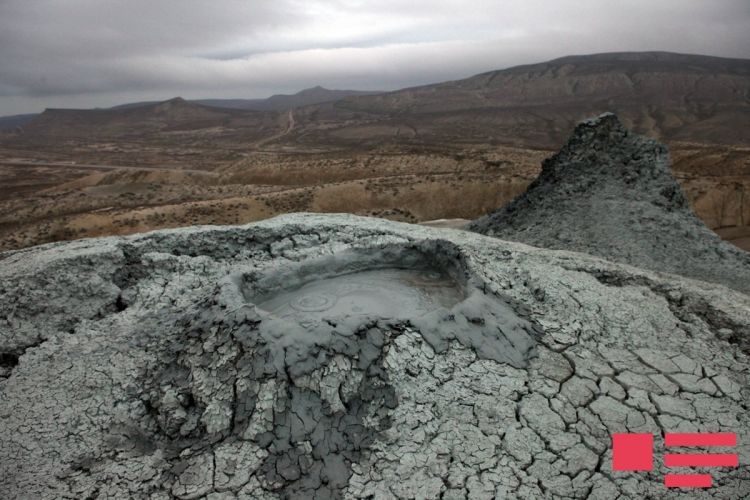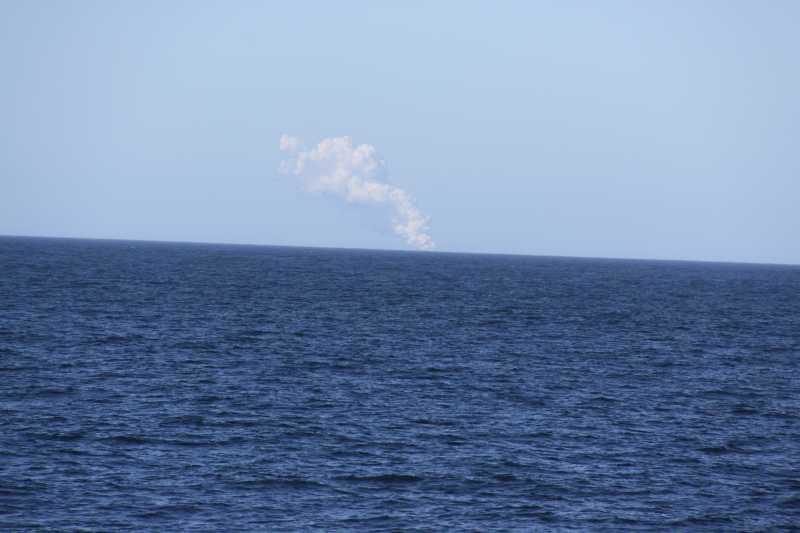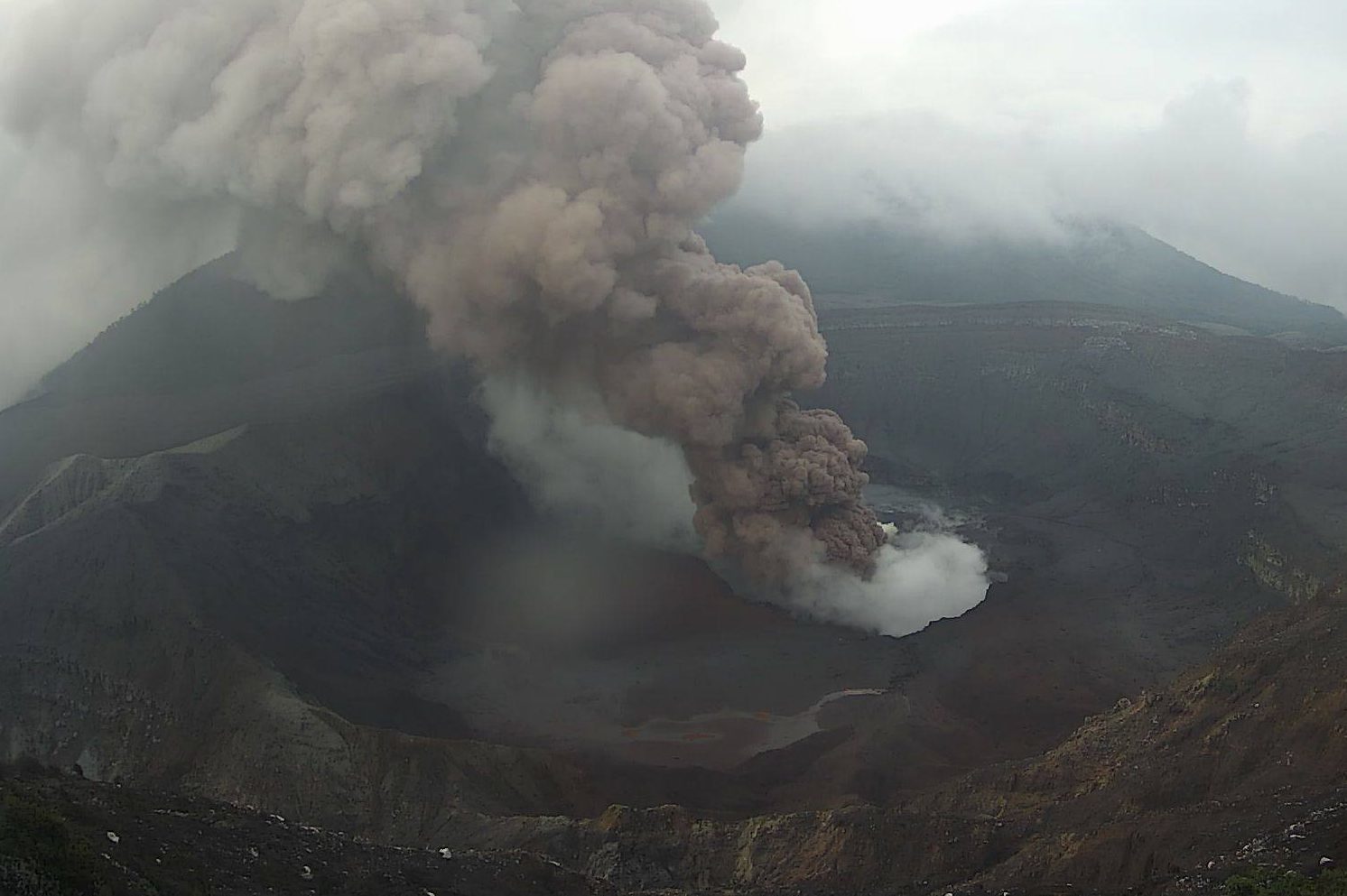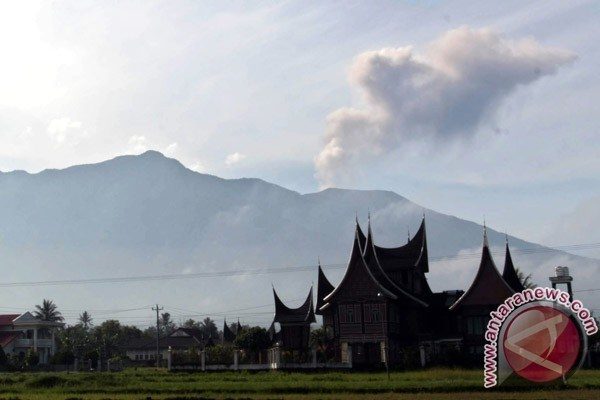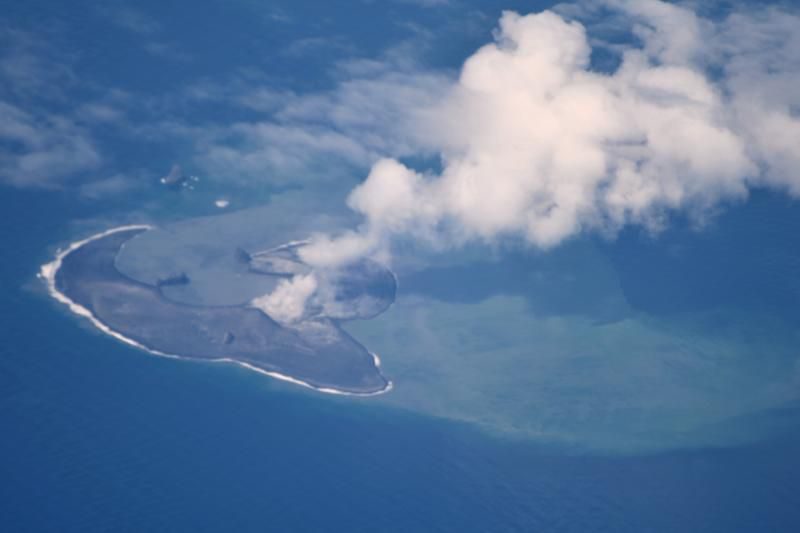
© Cyrus Read, USGS/AVOBogoslof Island, June 11, 2017. Photo taken from an Alaska Airlines jet enroute to Adak
After a pause about approx. 2 days with little detected activity since the large explosion on 10 June,
a new series of relatively strong explosions began early today at 1:47 UTC 13 June (17:47 local time AKDT June 12). At least two larger pulses of activity occurred, each lasting 10-30 minutes and producing ash plumes up to 25,000 ft (7.5 km) altitude that dissipated within 30 minutes.
According to the Alaska Volcano Observatory (AVO), the last such episode of explosive activity ended at 04:35 UTC this morning (20:35 AKDT June 12).
The ash from the latest eruptions is drifting SE toward Unalaska Island where minor ash fall could occur.
For the time being, the volcano has been calmer again during the past hours, but as similar explosive events are likely to occur again in the near future, the Aviation Color Code remains at RED.
Likely, the latest series of explosive eruptions have destroyed the lava dome observed on satellite data during the past week.
